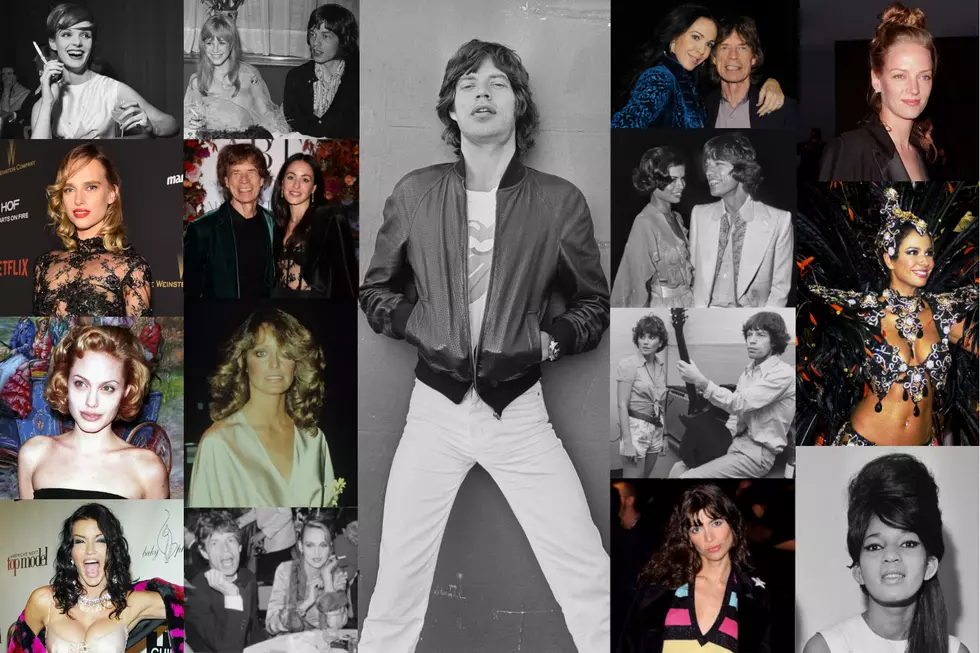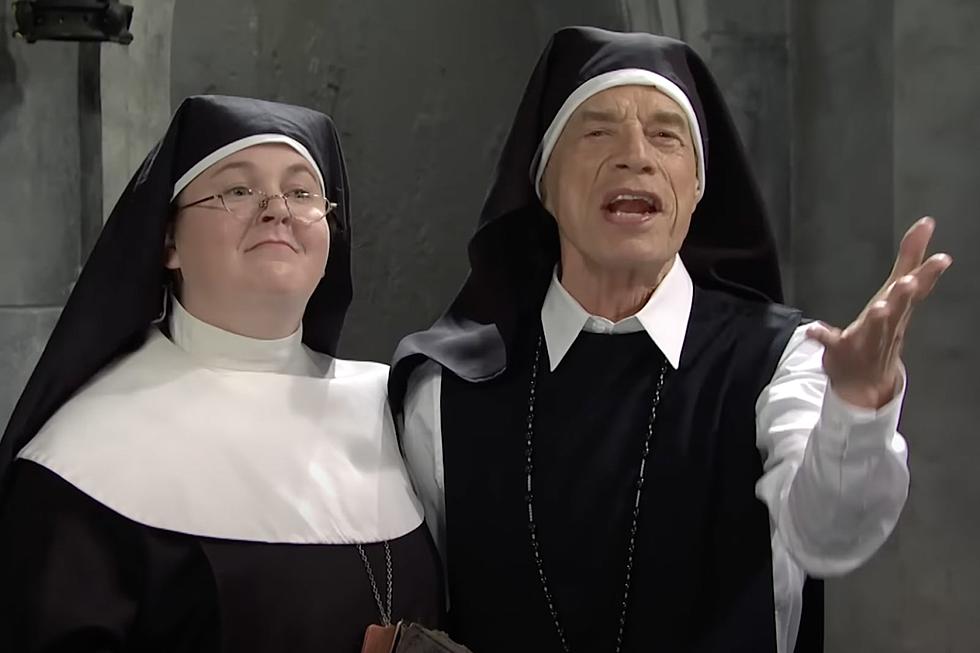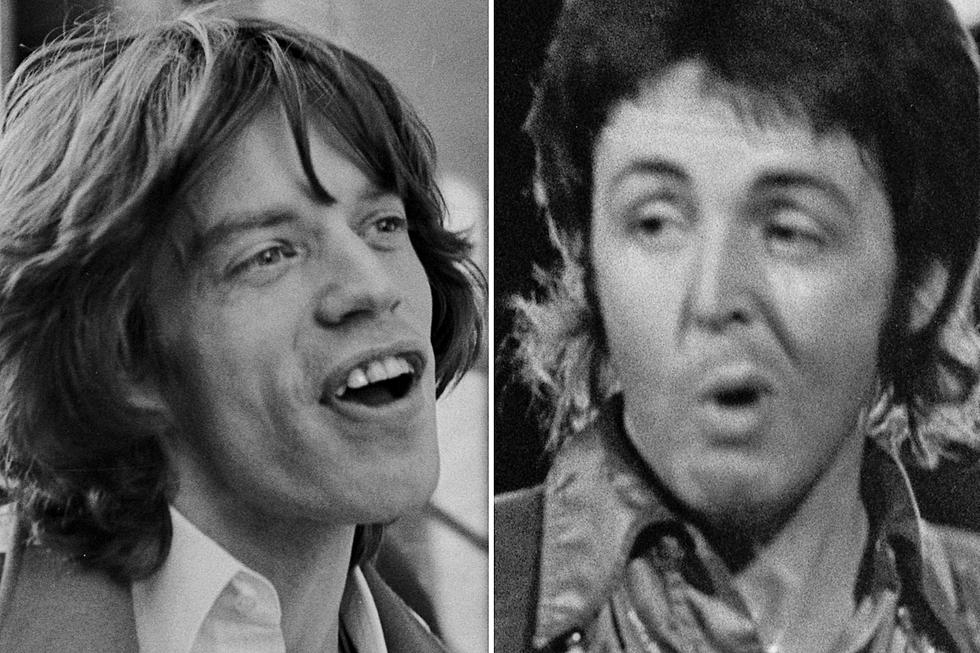
When Mick Jagger Got ‘Shot’ on ‘Ned Kelly’ Movie Set
“Ned Kelly was wounded during the siege of Glenrowan today – but not by the police,” read a Sydney Morning Herald report dated Aug. 20, 1969. “Government troopers could claim no credit. Ned was wounded in the hand when his pistol backfired.”
Of course, the real Ned Kelly – the noted 19th-century Australian outlaw – wasn’t the subject of the story. Rolling Stones frontman Mick Jagger was. He was playing the role of Kelly in a movie, and the injury had been caused by his prop gun as Kelly’s final shootout with cops was being filmed.
“A pistol loaded with blanks, which he was using at the time, backfired to drive the metal into his hand,” the newspaper reported, saying that he’d later left a Canberra hospital “heavily bandaged and in a sling under his long fur coat. Still affected by the local anaesthetic used to extract the metal, Jagger said he only remembered he was ‘shooting a lot of policemen’ when the incident occurred.”
It had already been a difficult year for the 26-year-old singer. The Rolling Stones had fired co-founder Brian Jones in June after months of uncertainty. Weeks later, Jones had been found dead in his swimming pool in circumstances that remain under question today. Jagger and then-girlfriend Marianne Faithfull had been unable to attend the funeral on July 11 as their Ned Kelly contracts required them to be in Australia by that date. Their relationship was on the edge of disintegration, and, fueled by unhappiness, Faithfull lost her role in the movie when she took a drugs overdose and had to spend several days in hospital.
Even the choice of Jagger for the starring role had met criticism – particularly from those who disputed the idea that Kelly had been an immoral criminal but instead was Australia’s Robin Hood. Despite having Australian family connections, his build and look was felt to be wrong, as was his lack of Irish roots. Criticism even extended to the fact that Ned Kelly was being filmed in the Canberra area, and not in Victoria, where the real-life drama had played out; and that the singer needed a double for any scene that involved riding a horse.
By the time the film was premiered, neither Jagger nor director Tony Richardson wanted anything to do with it, and they didn’t attend the gala screening. One reviewer wrote: “Mick Jagger may have the girls screaming when he sings rock and roll but there were no screams for him when he played Ned Kelly … unless you count screams of anguish.” The singer himself later called it “a load of shit,” explaining: “I only made it because I had nothing else to do … you never know until you do it whether a film will turn out to be a load of shit, and if it does, all you can say is, 'Well, that was a load of shit,' and try to make sure you don't do anything like it again.”
While his relationship with Faithfull burnt out, Jagger kept up a correspondence with model Marsha Hunt, with whom he had a brief but powerful relationship. In his letters from Australia – which were auctioned in 2012 – he told her about bad weather, a debilitating virus that swept through the production team, a fire that destroyed costumes and a number of accidents, including co-star Mark McManus narrowly avoiding serious injury in a horse cart crash. Of his shooting incident Jagger only said it was “boring crap.”
In fact, he’d been badly burned and temporarily lost the use of his right hand, which doctors told him to exercise as best he could. That exercise included devising an alternative way to play guitar – and that’s how Jagger came up with the idea for Rolling Stones classic “Brown Sugar.” In 1995 he recalled: “That’s a bit of a mystery, isn’t it? I wrote that song in Australia in the middle of a field. They were really odd circumstances … my hand had got really damaged in this action sequence. So stupid. I was trying to rehabilitate my hand and had this new kind of electric guitar, and I was playing in the middle of the outback and wrote this tune.”
Confirming that he wrote the entire song himself, he reflected on how Hunt and other influences – including drugs and interracial sex – had found their way into lyrics that appeared to reflect the turmoil he was living through at the time. “God knows what I’m on about on that song. It’s such a mishmash. All the nasty subjects in one go.”
Watch the Rolling Stones Perform 'Brown Sugar'
It seems that “Brown Sugar” helped end his apparent disillusionment with the music world – suggested as one of the reasons he’d stepped into the movie world. In one letter to Hunt towards the end of filming, auctioneer Sotheby’s said, Jagger wrote “with ironic distance about his own superstar status, conjuring up a satirical picture of him sitting in luxury in his caravan surrounded by sycophantic hangers-on who nod approval as he repeats his banal lines and a pretty girl ‘drools up’ with a rewrite, before he takes up his guitar and shocks the company with a new song – ‘a scathing attack on the film industry.'”
Despite that, some locals who met him during the shoot told ABC in 2018 that he seemed to enjoy certain aspects of the experience. Publican Jamie Raynolds remembered a “charismatic” Jagger drinking green ginger wine in his bar, and another moment when he performed as an extra in the movie. “We were both in makeup together, sitting right beside each other, and he got his makeup finished and walked across the lawn on a vacant block of land and went 'choop,'" Raynolds said, imitating a classic Jagger stage move. “I could tell he wanted to get back to the rock ’n’ roll scene as quick as he could.”
Ned Kelly had been Jagger's second foray into movie-making, after he played a reclusive rock star in 1968 feature Performance. Even though his dalliance with Australian outlaws was a failure, he'd eventually return to the silver screen.
Mick Jagger: Movie Star?
You Think You Know the Rolling Stones?
More From Ultimate Classic Rock









